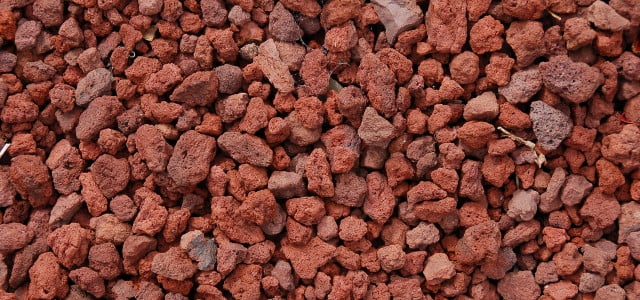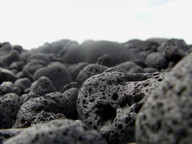
Lava mulch is a popular and durable natural material for the care of your plants. We explain how to use lava mulch and what features and drawbacks the rock has.
Contents
Lava mulch: dried lava
In addition to classic bark mulch, (amateur) gardeners are increasingly turning to lava mulch. Lava mulch is hardened lava rock. It has a reddish brown to gray color and porous structure. You can use the mineral, also called lava gravel, to improve your soil or protect flower beds.

Application of lava mulch
To protect and maintain your bedding plants, it is best to spread lava mulch in the fall.
First, remove weeds from your beds and loosen the soil if necessary.
- Then spread your layer of lava mulch over the entire bed and spread it evenly. Generally, it is recommended to spread the layer about six to eight inches high in the bed.
- If you are replanting your bedding plants, you can also work with two layers of lava gravel:
First excavate the bed and then add a layer of lava mulch on top. This should be about four to five centimeters thick
- Place your plants and soil on top.
- Finally, add another layer about three centimeters thick.
- This method protects particularly sensitive young plants from the first winter cold.
Advantages and disadvantages of lava mulch
Lava mulch is a very durable natural material with versatile properties. You can use the mineral both for protection and improvement of your soil, and as a decorative element, such as in a rock garden. The mineral gravel is also suitable for bordering flower beds or edging paths and driveways.
Lava mulch has several advantages and special features. It ensures a constant temperature in the bed: the mineral rock warms up during the day and releases the stored heat into the soil at night. This effect allows the gardening season to begin earlier in the spring.
- prevents waterlogging and at the same time provides constant moisture. In this way, it acts like a natural drainage system.
- can be used individually: if you use lava rock with the same grain size, it loosens the soil and allows water to pass through better. If you use a mixture of larger and smaller stones, the layer becomes firmer and less permeable. You can vary the effect depending on the soil and plants.
- prevents weeds from growing, as they have difficulty growing through the layer.
- prevents erosion of the garden soil due to heavy rain.
- is odorless.
- does not rot, unlike bark mulch.
- is visually appealing, even for rock gardens or Zen gardens.
But lava mulch also has disadvantages:
Unlike bark mulch or lawn clippings, lava mulch can’t enrich your soil with organic nutrients. So if you use lava mulch, always be sure to add fertilizer to your bedding plants.
Under deciduous trees or close to lawns, lava mulch can fray unsightly over time. The small stones mix with leaves or grass. You can only remove them with difficulty due to their size.
Tip: Do not spread your lava gravel near deciduous trees. Use a border to prevent the pebbles from scattering.

